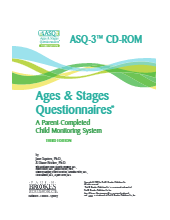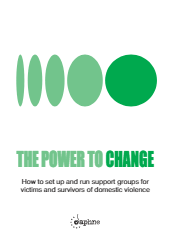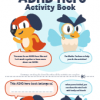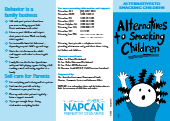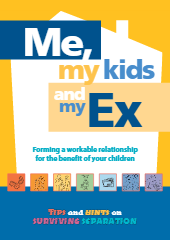Exploring Identity, Power, Values and Ethics
This tool provides a framework called Social GGRRAAAACCEEESSSS for reflecting on different aspects of personal identity as a person and as an enabler of supervision. It includes questions to consider how one’s identity might be described by others, what aspects are visible/invisible and voiced/unvoiced, and how identity might impact supervision relationships. The reflection aims to increase self-awareness about identity and its potential impact on supervision.
The resource provides a compilation of case studies that demonstrate the application of the Social GGRRAAAACCEEESSSS tool in various social work contexts. It delves into the nuances of identity reflection in supervision, offers insights for student social workers, and presents an examination of a family’s challenges upon immigrating to a new country. Each case study serves as a practical guide for social workers, highlighting the importance of understanding multi-dimensional identities for effective and empathetic interventions.
This tool builds on the identity reflection in Tool 1 and prompts thinking about any implications of one’s identity to share with two groups: a community of practice, and one’s own local authority. It asks supervisors to consider if their self-reflection on identity has any relevance to share after becoming more self-aware. Sharing implications with groups can further learning about how identity shapes supervision relationships and practice.
This tool uses a video and reflective discussion to explore personal experiences of privilege and disadvantage. It prompts supervisors to share examples in pairs of when they’ve faced related dilemmas or challenges in supervision. After this paired discussion, supervisors individually reflect on what they’ve learned from those challenges to build understanding of how privilege and disadvantage shape supervision relationships and practice.
This is a case study exercise and reflection example aimed at helping social work students develop cultural competence and analyze privilege when working with minority families in the child protection system. It provides a scenario of conducting an assessment with an asylum-seeking family and prompts students to reflect on privilege, cultural sensitivity, language barriers, trust-building, intersectional vulnerabilities, assessing needs, and collaboration. The reflection example models how to thoughtfully analyze one’s positionality and approach the case with empathy, openness, and empowerment.
This supervision styles exercise allows practice supervisors to reflect on their use of power and authority through role play with peer feedback. In groups of 3 or 4, supervisors take turns being a supervisee, supervisor, and observer(s) in a mock supervision session. The supervisee reflects on their supervision style related to power and authority, the supervisor helps the supervisee reflect, and the observer(s) provide feedback. Supervisors make notes for personal reflection on developing effective use of power based on the peer discussions.
This anti-oppressive practice tool provides a framework to reflect on the personal, cultural, and structural barriers faced by people you work with. It includes prompts to consider the impacts of these barriers on the individual and your relationship with them. The reflection aims to increase understanding of oppression experienced and determine your role in combatting barriers through empowerment and anti-oppressive supervision.
This reflective questioning tool guides supervisors through Kolb’s learning cycle to critically analyze an ethical dilemma, including describing the situation, reflecting on experiences and beliefs, analyzing perspectives, and planning action. It can be used in supervision to explore dilemmas, supporting wellbeing through discussion and generating insights to improve practice. This tool is intended for use in conjunction with an available podcast.
Enhancing Reflection
This individual reflection tool provides open-ended prompts for supervisors to identify and articulate their strengths in relationship-based practice supervision. By completing the statements, supervisors can build awareness of what they excel at, accomplishments they are proud of, and ways they have helped their organization. The reflection aims to boost self-confidence and recognize one’s capabilities as a practice supervisor.
This tool is a structured method for critical reflection, aiding in effective decision-making during supervision. Based on Kolb’s (1984) four stages of reflection, this tool guides users through a series of questions across stages like experience, reflection, analysis, and planning, aiming to clarify actions and extract learning from experiences. It’s beneficial for individual or group supervision, especially in complex situations, as it fosters understanding, insights, and actionable plans.
This group reflection tool called Systemic Reflective Space creates a structured process for one member to present a practice issue, while others listen and explore perspectives, followed by the presenter responding to the discussion and joint reflection. The aim is to build collaborative practice, offer alternative views to gain insights, and utilize the strengths and diversity of the group to transform practice through critical reflection.
This group supervision planning tool provides a checklist of key considerations like purpose, membership, activities, authority and evaluation to optimize the effectiveness of group supervision sessions. Going through the prompts can help supervisors thoroughly prepare for productive group discussions that enhance practice, explore common themes, integrate theory, build skills, and achieve intended outcomes. The tool can also be used to review existing group supervision.
This reflection tool outlines four levels of reflection from technical to process, providing descriptions and prompts to identify when each level is used and appropriate. Recognizing the depth of reflection supports supervisors in deliberately employing deeper critical analysis as needed to build professional capability, promote reflexivity, and manage emotions and unconscious biases influencing practice. The tool can develop self-awareness of reflection levels used and skill in accessing deeper reflection.
This critical thinking tool helps practitioners categorize case information as evidence, ambiguous, assumption, or missing to examine gaps and biases influencing decisions. By sorting information and reflecting on changes in knowledge, remaining questions, impacts, and next steps, supervisors can support workers in analyzing uncertainties and moving from assumptions to evidence-based practice. The tool builds capability for information-seeking, managing ambiguity, and wise judgment.
This reflective discussion tool incorporates law, theory, and research into questions mapped to Kolb’s learning cycle when exploring a practice situation. Preparing relevant law, theory, and research and comparing experiences to this knowledge base facilitates critical analysis of impacts, causes, meanings, and responses. The integration of outside learning prompts insights to inform next steps while identifying remaining knowledge gaps to build practice skills.
This critical incident analysis tool provides a framework to reflect on and learn from a significant practice event through describing the incident, analyzing initial responses, identifying issues and dilemmas, considering impacts and outcomes, and determining future learning needs. Mapping key aspects of the incident facilitates in-depth reflection to gain self-awareness, integrate theory, and transform thinking, feeling, and actions to improve practice. The structured analysis can be used individually or in supervision.
This risk influences reflection tool identifies common biases like repetition, adjustment, relationship concerns, availability, and prejudice that shape risk perceptions. Prompting practitioners to consider how each factor affects their thinking about a specific situation increases self-awareness of subjective influences on risk judgments. Recognizing biases can lead to more objective analysis by overcoming habitual reactions in order to make sound risk assessments.
The SPARK tool is a self-reflective evaluation tool for professionals to develop a tailored self-care plan. It uses prompts across different life domains to help professionals assess areas for improvement and build resilience. The tool encourages self-compassion and emphasizes that self-care is an ongoing process.
The guide explains the emotional toll professionals can face when helping others. It looks at how this affects individuals personally, professionally, and the bigger organization. The guide also gives tips on reducing these negative effects and offers extra resources for learning.
This resilience skills tool identifies 7 learnable capabilities like emotional regulation, causal analysis, and empathy that support bouncing back from adversity. Practitioners rate their current skill level in each area and reflect on behaviors, strategies, supports, and blocks related to applying the skills. The structured analysis of resilience factors provides insights on developing abilities to constructively respond to challenges and build professional capability.
This resilience skills tool allows practitioners to rate their abilities in 7 areas like emotional regulation, analyze supports and blocks, and develop action plans to build skills. Completing the structured reflection individually then reviewing in supervision provides insights to improve resilience. Setting goals, planning steps with support, and tracking progress grows capabilities to handle adversity and boosts wellbeing.
This self-care audit and planning tool guides reflection on work experiences, life circumstances, coping strategies, and sources of stress and comfort to identify needed self-care strategies. Practitioners develop an individualized plan for the short and long term to prioritize activities, people, and changes that promote wellbeing and resilience. Completing the audit and setting intentional goals for self-care enables supervisees to mitigate negative impacts of their role and sustain effectiveness.
These emotional resilience postcards outline positive strategies like planning ahead, reframing problems, exercising, seeking support, and mood modification that can help cope with work stressors. In supervision, supervisors can guide supervisees to identify demands, reflect on current coping methods, and consider adopting new research-based approaches. Having postcards to refer to builds capability to manage emotions and sustain wellbeing while handling challenging situations.
This debriefing tool provides a structured approach to discuss the emotional impact of a specific work encounter, adapting the Schwartz Rounds model. In a safe supervision setting, a practitioner shares their story and feelings without problem-solving, followed by joint reflection on the experience of sharing. Acknowledging emotions and reactions to build self-awareness supports resilience and wellbeing, though further organisational support may be needed.
This change management tool uses a dartboard to categorize aspects of a change situation as within control, influenceable, or outside control. In supervision or team discussions, it prompts reflection on impacts, reasons, and potential responses to take control of what’s possible and influence where beneficial. Identifying spheres of control/influence provides focus for constructive action to manage oneself and help shape change.
The Managers’ Audit Tool is a table that allows managers to rate themselves on various management competencies like managing workload, teamwork, process planning, communication, and providing feedback. The table has descriptions of best practices for each competency, and managers rate themselves on a 0-2 scale on how often they demonstrate those practices. The table also has a column for managers to describe improvements and actions needed in each competency area.
The Four Strategies for Reducing Stress and Building Resilience tool outlines 4 key strategies – Focus, Diffuse, Distract, and Relax – and provides examples of specific people, tools, and techniques in each category that can help reduce stress levels. The tool recommends creating a personalized list under each strategy with resources and methods to call on when feeling overwhelmed or needing to re-center. Using these four evidence-based strategies together can help build resilience and manage stress.
The Top Tips for Containing Infectious Anxiety tool provides 3 strategies to help contain anxiety during uncertain times – using the CPR acronym to calm thoughts, pause for breath, and relax muscles; getting in touch with calm by noticing how it feels and spreading it; and taking things one day at a time rather than worrying about the distant future. Practicing these tips can help individuals and teams manage anxiety and foster resilience.
The SUMO (Stop, Understand, Move On) tool is a simple 7 question framework to help individuals and teams reflect on their stress and anxiety levels during different phases of the COVID-19 pandemic – Immediate Response, Repair, and Recovery. Asking the 7 questions over time can guide the transition to lower anxiety and a new normal, as people Stop, Understand their anxiety, and Move On from crisis to stability. The tool provides a structure for processing trauma and building resilience.
Collecting Feedback
The Adults and Carers Feedback tool provides a framework for gathering feedback from service users and using it to improve practice through supervision discussions. It includes questions to guide the process of obtaining feedback, sharing it in supervision, identifying practice improvements, informing the organization of changes needed, and closing the loop by communicating back to service users. Using feedback in this structured way enables continuous learning and service improvement.
The Bridging Interview tool provides a structured approach for supervisors to practice giving critical feedback. Individuals think of a real situation requiring critical feedback, write an opening statement for the next supervision session, and share it with a small group. Group members listen to each statement, provide feedback on its clarity and impact, and suggest any improvements. Going through this exercise helps supervisors prepare for challenging conversations and deliver constructive criticism effectively.
The Giving Feedback on Supervision tool provides guidance on how to give constructive feedback within the supervisory relationship in order to improve supervision. It outlines principles and qualities of good feedback such as being clear, owned, regular, balanced, and specific. The tool includes sample frameworks for gathering evidence, identifying gaps between expectations and reality, having a discussion, and agreeing on changes, as well as tips for giving difficult feedback.
The Practice Observation tool supports directly observing a social worker’s practice and reflecting on it in supervision to aid development. It includes sections for a pre-observation discussion, post-observation reflection questions for both parties, and a framework for providing feedback in supervision on what happened, how it felt, what it meant, strengths, areas for improvement, and an action plan. Practice observation followed by collaborative reflection strengthens skills and accountability.
The Supervision Observation tool supports directly observing a supervision session and then reflecting on it collaboratively. It includes pre-observation discussion, post-observation reflection questions, feedback on strengths and improvements, and an action plan. With consent, anonymized organizational learning can also be extracted to evaluate supervision’s impact.
Developing Practice
The Appreciative Inquiry tool guides supervisors in identifying and analyzing good social work practice through a 4-step reflective discussion: Elicit a proud example, Amplify details of what went well, Reflect on key learning, and Start over to elicit more insights. By repeatedly surfacing specifics of what enabled success, supervisors can reinforce excellent practice, extract transferable learning, and feed back organizational improvements. Appreciative inquiry builds on strengths.
The Coaching tool provides a 4-step GROW model for reflective discussions in supervision – establish the Goal, discuss Reality and influencing factors, generate Options for achieving the goal, and decide What action will be taken. By using coaching questions, the supervisor guides the supervisee to increase awareness and determine their own solutions. The tool includes a sample scenario for supervisors to practice applying the coaching methodology.
The Learning and Development Action Plan tool supports continuous improvement through supervision discussions. Individuals identify striking new knowledge, skills needing development, specific actions to take, support needed, how to measure progress, and timing. By completing the template, supervisees increase self-awareness, create goals, and collaborate with supervisors on their growth. The tool can also elicit organizational learning for improvement.
Conducting Audits
The Audit of Supervision Principles tool enables assessment of how well supervision aligns with good practice principles. Individuals or groups rate supervision on a 1-5 scale for each principle, comment on evidence, and identify actions and timescales for improvement. Reflecting on principles in this structured way strengthens ethical, effective, person-centered supervision and also elicits organizational learning.
The Reflective Supervision Audit Tool provides a framework for assessing the quality of supervision against 6 principles of good practice. Auditors gather evidence on each principle and determine whether supervision should be challenged, supported, maintained, or promoted. The tool elicits organizational learning and enables supervisors and supervisees to strengthen their supervision through collaborative audit and action planning.
The Supervision Self-Audit tool allows supervisors and supervisees to rate and comment on the quality, impact, and outcomes of their supervision on a 1-5 scale. Statements cover the supervisory relationship, environment, discussions, and effects on confidence, support, learning, organizational role, motivation, and clear actions. The collaborative feedback strengthens individuals and also elicits organizational learning about supervision.
The Supervision Audit Tool allows structured review of supervision records against evidence-based quality standards, with supervisors rating on a 1-5 scale for frequency, environment, reflective discussion, actions, learning, and more. Detailed comments capture qualitative evidence and prompt collaborative reflection between supervisor and supervisee on strengths, areas for improvement, and support needed. The process strengthens individual supervision and provides organizational learning.
The Fit with Other Activities tool helps align supervision with complementary practices by identifying where key supervision functions like relationship-building, service user involvement, reflection, oversight, support, and learning also occur. Individuals, supervisors, or organizations can use the template to map connections, find gaps, and strengthen the supervision framework through better integration with related activities. A holistic practice system reinforces supervision’s impact.
The Supervision Evaluation Framework supports assessing supervision’s quantity, quality, and impact through key questions on amount provided, how well delivered, and the difference made to service users, staff, and organizations. Proposed methods like audits, observations, and feedback surveys evaluate if supervision policies are implemented, standards met, and intended outcomes achieved. Comprehensive evaluation enables continuous improvement at individual and organizational levels.
Strengthening the Supervisory Relationship
The Supervision Relationship tool allows supervisors and supervisees to discuss and agree on how to build an effective relationship through considering key elements like safety, honesty, trust, values discussions, help-seeking, support and challenge. By outlining expectations and intentions, both parties take responsibility for co-creating a supervision experience that meets their needs. Clarifying the relationship dynamics promotes open and productive supervision.
The Person-Centered Approaches tool promotes tailoring supervision to individual needs through two exercises – Important To/For sorting identifies supervisee priorities and requirements, while One Page Profiles capture appreciated qualities, important elements, and ideal support. Sharing profiles enables supervisors and supervisees to understand each other better and co-create a collaborative relationship catering to unique people. A personalized approach makes supervision more meaningful.
The What Works for Me tool helps supervisees identify their ideal supervision setup through considering needs related to supervisor assigned, location, format, experience level, role complexity, setting, frequency, duration, key elements from the 4x4x4 model, and recording preferences. Completing the template enables supervisees to articulate what supervision structure and focus will best support their growth and performance. Tailoring supervision to the individual strengthens its impact.
The Building a Good Relationship tool helps supervisors and supervisees strengthen their supervision relationship through identifying current strengths, discussing areas for improvement, mapping their internal models based on past experiences, and considering how to adjust behaviors. By surfacing influences on the relationship and intentions for change, both parties take responsibility for co-creating an authoritative yet trusting connection. An intentional approach develops a supervision relationship that meets mutual needs.
The Supervision Agreement template captures mutual expectations and practical details to guide the supervisory relationship, including preparation, agenda, follow-up, scheduling, behaviors, handling difficulties confidentially, and preferences. Completing the agreement jointly clarifies roles and responsibilities, prevents issues, and aligns supervision with policy aims of promoting wellbeing and anti-oppressive practice. Agreements enable shared understanding of how to work effectively together.
The Supportive/Directive tool uses a matrix to map different supervision approaches from highly directive to highly supportive, allowing supervisors and supervisees to assess the right balance of support and direction needed in different situations. Discussion in supervision about moving between directing, coaching, supporting and delegating modes builds supervisee capability and tailors the supervisor’s approach. Adjusting the support-direction mix over time develops practitioner independence.
Organisation and Recording
The Supervision Policy Outline provides key sections to include when developing or reviewing a supervision policy, covering the purpose, model, relationship expectations, practical details, confidentiality, preparation, recording, quality assurance, tools, and more. A comprehensive policy facilitates shared understanding and consistent practice aligned to organizational goals. Clear supervision policies support effective implementation.
The Supervision Recording tool provides guidance on planning, structuring, and documenting supervision aligned to the CLEAR model, covering preparation, agenda-setting, discussion areas like workload, cases, wellbeing, learning, relationships, and actions. It outlines ethical recording practices, shared ownership, required case notes, confidential storage, and use of supervision records for improvement. Clear recording protocols enable supervision to be consistently implemented and evaluated.
The Organizational Culture tool helps assess how cultural elements like stories, behaviors, environment, roles, structure, and communication either support or hinder effective supervision values and practices. By mapping connections and gaps, groups can identify changes needed in areas such as stories, behaviors, environment, roles, structure, and communication to better align organizational and supervision cultures. Matching cultures reinforces supervision’s impact.
The Retaining Staff tool identifies organizational pull factors like making a difference and push factors like blame culture, and prompts discussion of how supervision can enhance positives and mitigate negatives to improve retention. Mapping links between known retention drivers and supervision allows teams to collaborate on maximizing ‘pull’ factors and minimizing ‘push’ factors through effective supervision. Supporting retention requires aligning supervision with wider organizational culture and practices.
The Workload Considerations tool prompts supervisors and supervisees to discuss workload management in supervision by exploring the supervisor’s knowledge of the supervisee’s capabilities and cases, case complexity factors, diary flexibility, and stress levels. Raising workload-related communication, planning, prioritization, and wellbeing needs enables more responsive oversight. Workload management requires understanding the worker and the work.
The Case Prioritization tool helps supervisees and supervisors collaboratively rank and select the most complex, high-risk cases for in-depth discussion in supervision using factors like multi-agency involvement, risk likelihood and consequences, potential for change, and learning needs. Scoring cases from 1-5 guides prioritization of time to allow critical reflection on cases most requiring oversight. Focusing supervision discussions on priority cases enables better oversight within limited time.

